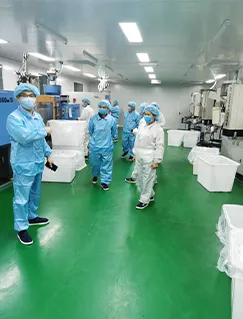Choosing the Right Plastic Containers for Medication Storage and Safety
The Role of Medication Plastic Containers in Modern Healthcare
In the ever-evolving landscape of healthcare and pharmaceuticals, medication storage and delivery play a crucial role in ensuring patient safety and medication adherence. Among the various options available, plastic containers have emerged as a popular choice for the packaging of medications. These containers not only provide a practical solution but also offer several advantages that contribute to the overall effectiveness of pharmaceutical products.
The Advantages of Plastic Containers
One of the most significant benefits of using plastic containers for medication is their lightweight nature. Unlike glass or metal packaging, plastic is easier to handle and transport, reducing shipping costs and making it more convenient for both healthcare providers and patients. Furthermore, the lower risk of breakage associated with plastic containers ensures greater safety during handling and storage.
Plastic containers also provide excellent barrier properties, protecting the medication from external factors such as moisture, light, and air that can degrade the quality of the drugs. Many medications are sensitive to environmental conditions, and plastic containers are often designed with specific barriers that ensure stability and longevity. For example, high-density polyethylene (HDPE) and polyethylene terephthalate (PET) are commonly used plastics that offer good oxygen and moisture barrier properties, making them suitable for various pharmaceutical applications.
Customization and Branding
The flexibility of plastic also allows for extensive customization options. Manufacturers can produce containers in various shapes, sizes, and colors, adapting them to meet the specific needs of different medications and target demographics. This ability to customize extends to labeling and branding, which is particularly advantageous for pharmaceutical companies seeking to create distinct identities for their products. Clear, informative labels can be printed directly onto the containers, enhancing communication with both healthcare providers and patients.
Moreover, many plastic containers now incorporate child-resistant features, addressing a critical safety concern for households with children. Compliance with safety regulations ensures that medication is stored securely, reducing the risk of accidental ingestion by young children. This feature not only protects children but also helps foster responsible medication practices among caregivers.
medication plastic containers

Environmental Considerations
While plastic containers offer numerous benefits, their environmental impact is an important consideration. The rise of environmental awareness has led to greater scrutiny of plastic waste and its effect on the planet. In response, many manufacturers are exploring sustainable solutions. Some are using recycled plastics or bioplastics, which are derived from renewable sources and are biodegradable. Developing more sustainable packaging options helps minimize ecological footprints and fosters a more responsible approach to packaging in the healthcare sector.
Additionally, initiatives for proper disposal and recycling of medication containers are gaining traction. Educating patients about how to properly dispose of unused or expired medications and their containers can significantly reduce the environmental impact. As healthcare providers and pharmacists work together to promote these practices, they can help create a culture of sustainability within the pharmaceutical industry.
The Future of Medication Packaging
As technology advances, the future of medication plastic containers holds even more promise. Innovations such as smart packaging are on the horizon, which could transform how medications are monitored and managed. For instance, integrating RFID (Radio Frequency Identification) tags or QR codes into plastic containers could provide real-time data on medication usage and adherence, ultimately improving patient outcomes.
Additionally, advancements in materials science may lead to the development of even more effective packaging solutions with enhanced protective properties. Researchers are continuously seeking ways to create plastics that are not only more durable and effective but also environmentally friendly.
Conclusion
In conclusion, medication plastic containers play an essential role in modern healthcare by providing practical, safe, and customizable solutions for medication delivery and storage. While challenges such as environmental impact remain, the industry is actively exploring sustainable options and innovative technologies that promise to enhance the effectiveness and safety of pharmaceutical packaging. As we look to the future, the evolution of plastic containers will continue to be a vital aspect of improving medication management and patient care.
-
Aesthetic Makeup Spray Bottles | Fine Mist Empty RefillableNewsAug.19,2025
-
White Plastic Veterinary Vaccine Vials | Lab Liquid BottlesNewsAug.18,2025
-
Plastic Medicine Liquid Bottle: Secure Flip Top Drug VialsNewsAug.17,2025
-
Durable 250ml Blue Plastic Vaccine Vial for Lab & Vet UseNewsAug.16,2025
-
Sterile Virus Sample Tubes: Secure & Reliable Specimen CollectionNewsAug.15,2025
-
White 250ml Plastic Vaccine Vial for Lab & Vet MedicineNewsAug.14,2025
























